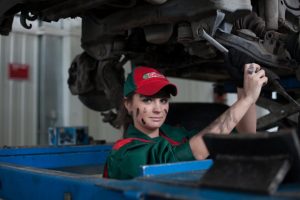Being a compression system operator in a factory is a huge responsibility. It might require appreciable knowledge of health, environment, and safety practices. Also, the requisite skill to manage multiple compressors in the workplace will increase the chances of efficient operations. According to the job sector, every operator needs some level of qualifications. We shall share some basic requirements for air compressor enthusiasts in this article.
Learn To Control Air Pressure
Pressure control with portable air compressors depends on the setup and internal mechanism of the system. Usually, factories and industrial plants use the rotary screw type of air compressors. These heavy-duty compression systems have complex centrifugal pumps. Don’t forget that handling air compression systems with high-pressure gases might be dangerous. Also, the pressure level of compressed air systems is important.
Apart from the safety threat, a poor application of pressure in air compressors could reduce the functionality of the system. Operators need to take compressor training courses. Modules like high-pressure oil pump setting, operator instructions, pumping efficiency tests, and pumping rates for air pressure are important.
Learn About Compressed Air Control
Handling pressurized air is essential for safe operations. Air compressors can regulate pressure by discharging gas. However, the discharge pressures increase with power consumption at about 100 PSI. You’ll need necessary adjustments for air compressor fittings to work optimally. Sometimes, excessive compression and clogged air filters require the operator to increase the compressor’s discharge pressure.
Without having the basic knowledge, unqualified operators might exceed the compressor’s rating, overload the motor and trigger over-pressure conditions. To modulate control, operators need to learn how air receivers and distribution lines work.

Learn About Air Compression Safety
Air compressor units should be operated by qualified and trained operators. When there’s pressure differential, a mishap might be lurking with potential hazards.
Generally, air compressors have moving parts. They include belts, pulleys, and compressor flywheels. Without understanding basic health and safety practices, the operator’s negligence could increase the speed of air compressors faster than what manufacturers recommend. Get awareness training before operating compressed air prevents damages to equipment, colleagues, and the environment. Usually, compressed air system training helps operators to initiate positive actions.
Integrate Air Compressors and Dryer Systems
Operators need to be competent in controlling air dryers and compressed air systems. The modes of operation, inlet modulation, and speed can determine the efficiency of the system. After integrating refrigerated air dryers and compressor units, they can be controlled through a centralized system. Usually, operators need to learn how to use onboard compressor control systems. This requisite training is essential before they can even use master control systems. Enrol for short courses in air system control if you are aspiring to operate complex air compression setups in factories.
Compressor Maintenance and Installation
Technical operations involve equipment maintenance and replacement tasks. Without any technical experience, air compressor operators might struggle to identify common faults. Minor preventive maintenance and replacement processes should be handled by factory operators.
However, a major overhaul or upgrade of old air compression systems is undertaken by engineers from respective manufacturers. So much input and technical advice are expected from factory operators during the installation and maintenance of compression systems. Usually, technical workers interpret data sheets and specifications of machines.
Safety Valves and Stop Valves
Understanding how air tank safety valves can prevent sudden blow-offs and injuries. To prevent these incidences, qualified operators should install stop valves along with lines for air. Also, automatic relief valves should be set at pressure levels below the receiver safety valves. Factory operators can enrol for special courses in accident prevention and management.
